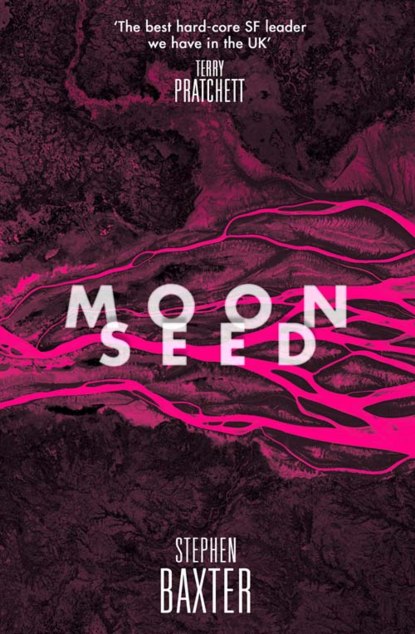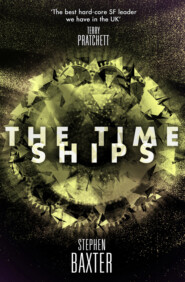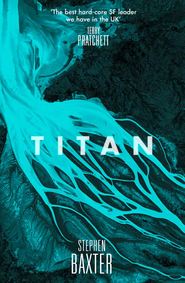По всем вопросам обращайтесь на: info@litportal.ru
(©) 2003-2024.
✖
Moonseed
Автор
Год написания книги
2018
Настройки чтения
Размер шрифта
Высота строк
Поля
He thought of the patch on Arthur’s Seat, spreading like the liver spots on the thin skin of Blue’s bird-boned hand. Was that what it was? – a sign that even the Earth, in the end, grew old?
You’ve drunk too much of this British piss, he thought. The next time he went to the bar he came back with Becks, which was the nearest they had to a clean American beer.
12
He arranged to meet Blue up on the Seat the next afternoon.
In the morning, with a mildly banging head, he made his way to the lab.
He made a run around the building, checking on the progress of his samples in the various labs. Here was the X-ray fluorescence spectrometer, for instance, an anonymous grey box which looked like an industrial-strength photocopier, into which ground-up fragments of his rocks were fed in tiny platinum egg cups. X-ray fluorescence would tell him about elemental abundances in fine detail.
He was promised by the prep technician that his samples would be in place by the end of the day.
The ion microprobe was the department’s million-pound pride and joy. It was set up in a gloomy lab crammed with humming electronic equipment. The heart of the probe was a chest-high complex of stainless steel tubing and chambers. Rock samples, coated in gold plate, were fed into a vacuum chamber and bombarded with fine beams of caesium or oxygen ions, focused by intense electromagnets. There was a little optical microscope you could use to watch the ion beam cutting its little crater into the surface of the sample, like a kid with a magnifying glass scorching his initials on the barn door. But the sample areas were just microns across, only a couple of atoms deep. The layers of atoms, sputtered off into a mass spectrometer, revealed the elemental composition of the sample, and such details as the temperature the crystal structures formed at.
It was an impressive piece of equipment – one of just four in geology labs around the world – or at least it seemed so until you realized that Motorola alone had four of the beasts, for use in their silicon chip quality control procedures. The academic community was undoubtedly the poor relation of business and government, and in Britain things seemed to be even worse than in the States.
Henry’s work, it seemed, was next in the queue behind a meteorite analysis that was overrunning, after an all-night run. He argued, but got nowhere, and left fuming.
Anyhow, he suspected the composition of the samples wasn’t nearly so important, in this case, as their structure. And that was going to be difficult to study here, without the right tools.
When he got to the clean room Mike was there, bright-eyed and depressingly keen, eager to go over the results of X-ray diffraction analyses he had run on samples taken from 86047. The results were simple traces, peaks and troughs. Mike had run the images through the computer already, and was compiling the results when Henry arrived.
But Mike looked flustered, and he was rushing to be ready; Henry had a sinking feeling he had been up all night with this.
At Henry’s request, he had also run through some of the bizarre grains Henry had scooped up from the Arthur’s Seat dust pool, or whatever the hell it was.
X-ray diffraction was a step beyond the use of polarized light. The wavelength of visible light was much bigger than atomic size. X-rays had a wavelength just about the size of a typical atom, so they could show atomic structure: the crystal structure of silicates, for instance. The spacing of the peaks and troughs on Mike’s results showed the crystallographic spacing of the sample. The trick was to map back from these simple patterns to figure what the underlying crystal structure must be.
It was complex. But diffraction results were unambiguous. And every so often you would run into a new crystal form.
And that, Henry realized with an odd stir of anticipation and dread, was what seemed to have happened here.
And not just with the Moon rock, which you might expect with such an exotic sample. There was, Mike said, something different about the Edinburgh sample, too.
They looked at the 86047 results first. Mike had prepared a summary diagram on a pc screen.
Inside the Moon rock’s potato-shaped profile, roughly sketched with graphic software, Mike had marked layers, as if the rock was a misshapen onion.
‘I took samples from all the way through the rock,’ Mike said. ‘You can see it has this structure –’
‘Structure? What are you talking about? It’s a rock sample. It ought to be a homogenized lump –’
‘Nevertheless,’ Mike said. He sounded nervous, maybe pissed off, and Henry made a conscious decision to back off. Mike said, ‘This is predominantly olivine.’ He pointed to a band marked in red, just inside a grey band that made up the surface of the rock. ‘Then, going inward, we have, in order, layers of tourmaline, a pyroxene mix, amphiboles, mica, quartz.’ That took his finger to the core of the rock, which he’d left as white.
‘So what’s in there? And what’s in the outside layer?’
‘I can’t say.’
‘You can’t say?’
‘Not from the diffraction results. But I know they are silicate forms. I did some chemical analysis to prove that. I can show you the results from the earlier optical emission and X-ray fluorescence tests which –’
‘Later. I believe you.’
‘The stuff at the centre seems to be hard and dense. Rigid.’
‘Some kind of super-quartz, maybe?’
‘Maybe. Some very complex structure, anyhow.’ Mike hesitated, watching him. ‘Some of us are speculating it might fold up all the way into the fourth dimension. Ha-ha.’
That didn’t make Henry feel like laughing.
He tried to keep the frustration out of his voice. ‘Well, we still don’t know what we’ve got here. We need to order more of these runs. Bump up the priority. I’m getting tired of queuing behind asshole grad students.’
Mike made a note. ‘I’ll call Marge Case.’
‘Don’t let her give you any shit. And, Christ, this just isn’t fine enough. We need some scanning tunnelling microscope time.’
Mike sighed. ‘Well, we don’t have an STM. As you know.’
‘All right. What about the surface stuff?’
‘It’s a dust,’ said Mike. ‘Very fine. Almost no cohesion or adhesion. If you disturb the sample at all, layers of it just fall off.’
Henry frowned. ‘That makes no sense. That damn rock was picked up by some galoot on the Moon, and then dropped from two hundred and fifty thousand miles into the Indian Ocean. That’s what I call disturbance. Anything loose should have been shaken off long ago.’
‘I know,’ Mike said. ‘I’m just telling you what I found.’
Henry pulled at his lip.
New forms of silicates?
It wasn’t impossible. There were lots of ways to make crystal structures out of the silicon anion, the fundamental silicon-oxygen tetrahedral building block.
But 86047 was just a rock, a fragment of some larger body that broke off an aeon or two ago. Why should it have this neat internal structure?
It was, he mused absently, as if something was living in there. Working, burrowing deeper into the rock, chewing up the olivine and leaving behind these deeper, complex layers …
‘Mike, I want you to repeat these tests. Keep on with the other stuff, the more detailed work, but go over this again. Every couple of days. See if there’s any change.’
‘Change?’ Mike frowned. ‘In a piece of rock billions of years old? How can there be any change? What kind of change?’
‘If I knew, I wouldn’t need you to run the tests.’
Mike made another note.
Very fine dust. Almost no cohesion or adhesion …











